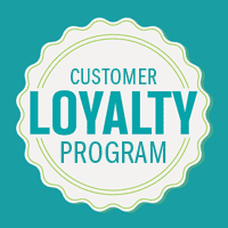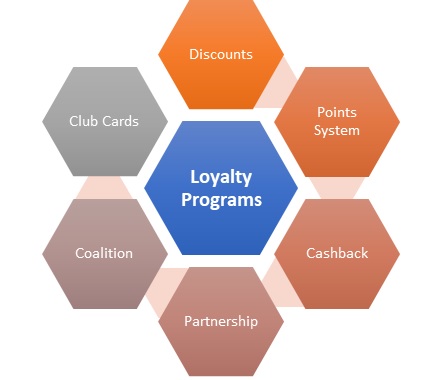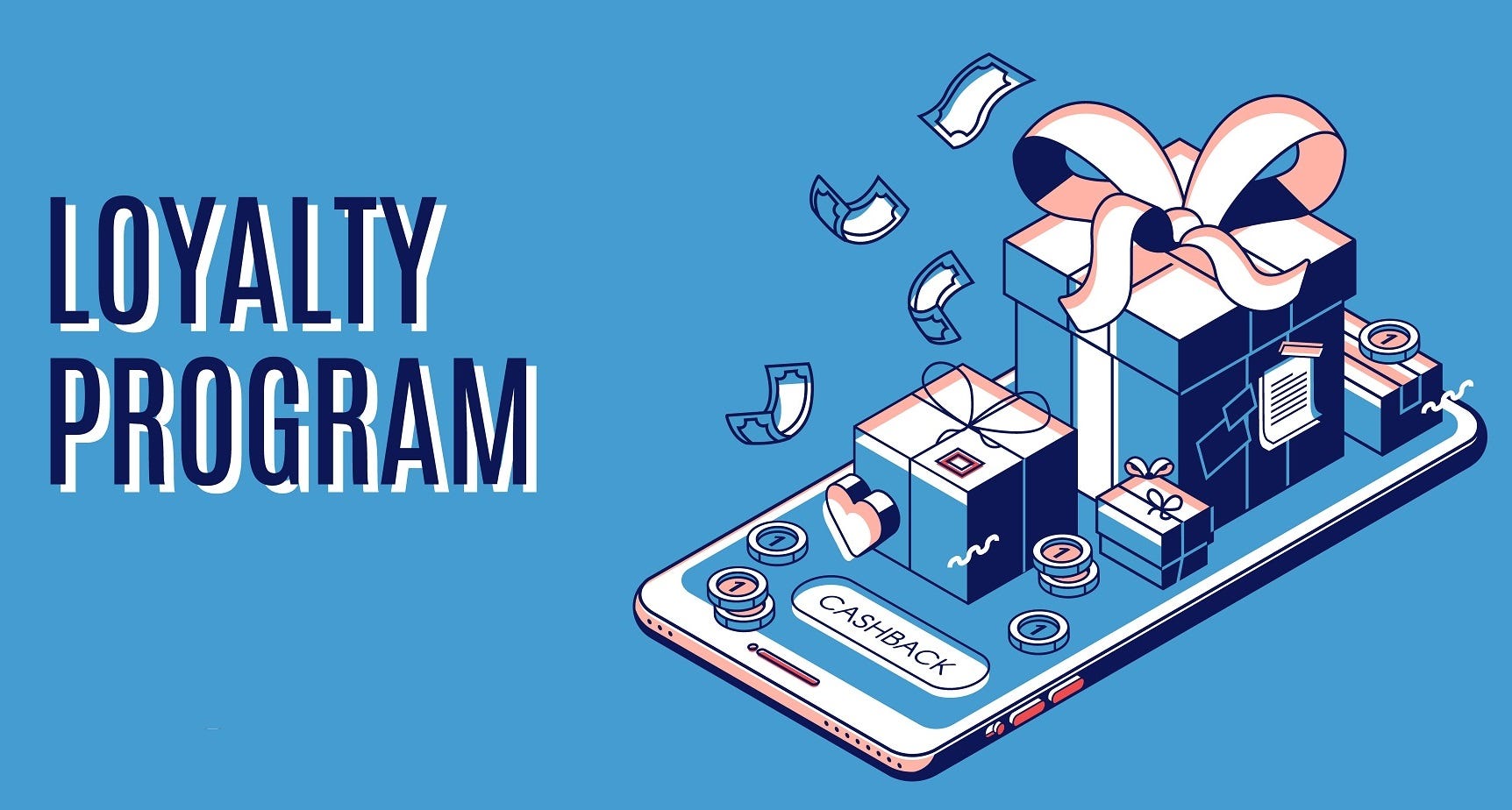All Categories
Featured
Table of Contents
In Derby, KS, Madeline Krueger and Michael Pineda Learned About Online Sales

What if you could grow your business without increasing your spending? In truth, what if you could in fact minimize your spending but increase your sales, every year? Would you do it? If you're an entrepreneur, then you'll likely offer a resounding 'yes', a basic answer to an even easier concern.
A benefits program tracks and benefits certain spending behavior by the customer, supplying unique advantages to devoted customers who continue to go shopping with a certain brand. The more that the consumer spends in the store, the more benefits they get. With time, this incentive builds devoted consumers out of an existing client base.

Even if you already have a benefit program in location, it's an excellent idea to dig in and fully comprehend what makes customer commitment programs work, in addition to how to implement one that costs you little money and time. Don't worry, I'll help you with that. I'll break down the main advantages of a loyalty program and the best ways to create faithful clients.
Let's dig in. Consumer commitment is when a client go back to work with your brand name over your rivals and is mainly influenced by the positive experiences that the consumer has with your brand name. The more positive the experience, the most likely they will return to go shopping with you. Client commitment is extremely essential to companies since it will assist you grow your service and sales faster than a simple marketing plan that focuses on hiring brand-new customers alone.
A couple of methods to determine consumer commitment include:. NPS tools either send out a brand name performance survey by means of email or ask customers for feedback while they are going to a company's site. This information can then be used to better understand the likelihood of consumer loyalty. A repurchase ratio determines the ratio of repeat buyers versus one-time buyers.
Client loyalty index (CLI). The CLI tracks client commitment over time and resembles an NPS study. Nevertheless, it takes into account a couple of additional elements on top of NPS like upselling and repurchasing. These metrics are then utilized to assess brand loyalty. A consumer commitment program is a marketing technique that rewards clients who make purchases and engage with the brand on a continued basis.
Consumer benefits programs are developed to incentivize future purchases. This encourages them to continue working with your brand name. Customer loyalty programs can be set up in lots of different methods. A popular customer commitment program rewards customers through a points system, which can then be invested in future purchases. Another kind of consumer loyalty program may reward them with member-exclusive perks or totally free presents, or it might even reward them by donating money to a charity that you and your consumers are mutually enthusiastic about.
In Georgetown, SC, Emery Cochran and Jacqueline Salas Learned About Customer Loyalty Program
By providing rewards to your consumers for being faithful and helpful, you'll construct a connection with them, deepening their relationship with your brand and hopefully making it less likely for them to change to a competitor. You've most likely seen client commitment programs in your own shopping experience, whether at your favorite cafes or your most frequented grocery shops.
But simply due to the fact that everyone is doing it does not indicate that's a sufficient reason for you to do it too. The better you understand the benefits of a customer rewards program, the more clarity you will have as you develop one for your own store. You will not be sidetracked by amazing advantages and complex commitment points systems.
Remember: work smarter, not harder. Customer retention is the primary benefit of a benefits program that serves as a structure to all of the other benefits. As you provide rewards for your existing client base to continue to buy from your store, you will offer your shop with a stable flow of cash month after month.
By growing your retention rate, you can stop investing as much time or money on increasing your total number of customers. Why is this crucial? Faithful consumers have a greater conversion rate than brand-new clients, implying they are most likely to make a transaction when they visit your store than a new client.
By increasing your retention rate by just 5 percent, you can increase your profits by 25 percent and as much as by 95 percent. Needless to say, your retention rate matters. Secret Takeaway: If you wish to significantly increase your profits, supply incentives for your existing customers to continue to shop at your shop.
And you won't have to invest money on marketing to get them there. Consumer acquisition (aka generating new customers) takes a great deal of effort and money to encourage complete strangers to trust your brand, pertained to your shop, and try your items. In the end, any money made by this brand-new client is eclipsed by all of the cash invested in getting them there.
Secret Takeaway: If you wish to minimize spending, focus on client retention instead of client acquisition. When you focus on providing a favorable individualized experience for your existing clients, they will naturally inform their family and friends about your brand name. And with each subsequent deal, devoted customers will inform a lot more individuals per transaction.
In Bangor, ME, Darnell Roman and Rory Roberson Learned About Marketing Campaign
The best part? Because these brand-new customers originated from trusted sources, they are most likely to develop into faithful consumers themselves, spending more typically than new customers generated by other marketing efforts. The Chase Ultimate Rewards program, for example, offers major benefits for individuals who travel a lot.
The 'supreme benefits' that Chase cardholders get consist of 2x points per dollar invested in all travel purchases as well as primary rental car insurance, no foreign transaction fees, journey cancellation insurance, and purchase defense. For individuals who take a trip a lotand have disposable income to do sothere is a massive reward to spend money through the ultimate benefits program.
This entire process makes redeeming rewards something worth extoling, which is precisely what many cardholders end up doing. And to help them do it, Chase uses a benefit for that too. Secret Takeaway: Make it easy for your clients to boast about you and they will get the word out about your store for complimentary.
When you get the fundamentals down, then utilizing a commitment rewards app can help look after the technical information. Here are the steps to get going with developing your consumer loyalty program. No client desires to purchase items they do not desire or need. The same goes for your loyalty program.
And the only way to tailor an irresistible consumer loyalty program is by totally knowing your consumer base. The finest method to do this? By executing these techniques: Build customer contact info anywhere possible. Ensure your organization is continuously constructing an in-depth contact list that permits you to access existing customers as often and as easily as possible.

Track client habits. Know what your customers desire and when they want it. In doing so, you can anticipate their desires and requires and offer them with a loyalty program that will please them. Categorize client personal traits and choices. Take a multi-faceted method, do not limit your loyalty program to just one opportunity of success.
Motivate social networks engagement. Frame techniques to engage with your consumers and target audience on social networks. They will soon provide you with extremely informative feedback on your services and products, allowing you to much better comprehend what they expect from your brand. Once you have actually worked out who your consumers are and why they are doing business with your brand name, it's time to choose which type of loyalty rewards program will motivate them to stay faithful to you.
In 74403, Yoselin Fleming and Milton Faulkner Learned About Business Owners
However, the most typical client commitment programs centralize around these primary ideas: The points program. This type of program focuses on gratifying clients for every single purchase they make with points in a point system. These points can then either be utilized on future purchases or put towards some form of reward.
The paid program. This type of program requires clients to pay a one-time or yearly cost to join your VIP list. Loyalty members who belong to this list are able to access distinct rewards or member-exclusive benefits. The charity program. This kind of program is a little different than the others.
This is attained by encouraging them to do business with the brand and, in return, their commitment will be rewarded with a contribution to a charity. The tier program. This type of program focuses on increasing levels of brand name commitment. The more devoted a client is to a brand name, the higher tier they will reach and the much better the benefits they will receive.
This kind of program is just as it sounds, where one brand name partners with another brand name to provide their collective audiences with unique member discount rates or deals that they can redeem while doing organization with either brand. The neighborhood program. This type of program incentivizes brand loyalty by offering its members with access to a like-minded community of people.
This kind of program is relatively comparable to paid programs, nevertheless, the subscription charge takes place regularly rather than a one-time payment. Next, choose which client interactions you 'd like to reward. Base these rewards around which interactions benefit your company one of the most. For instance, to assist your business out, you can offer action-based benefits like these: Reward customers more when working with your brand name throughout a sluggish duration of the year or on an infamously sluggish day of service.
Reward customers for engaging with your brand on social media. Incentivize certain products you are trying to move rapidly. Incentivize purchases that are over a specific dollar amount. The concept is to make your client loyalty program as easy as possible for your consumers to use. If your consumer loyalty program isn't staff friendly, isn't simple to track, is too expensive to run, or isn't easy for your consumers to utilize or comprehend, then staff and customers alike probably will not make the most of it.
To eliminate these barriers to entry, consider integrating a consumer commitment software that will assist you keep top of all of these elements of your program. Some quality consumer program software application include:. CandyBar is a digital punch card program. It works by tracking your client's purchases through an app on a computer, phone, or tablet.
In 98037, Ayaan Melton and Daniela Burke Learned About Vast Majority
Commitment members can then examine their benefits by means of text message and entrepreneur can use the program to contact their consumers. Yotpo. Yotpo is a cloud-based client commitment platform specifically for eCommerce companies. This software is particularly excellent at collecting every kind of user-generated content, helpful for customizing a much better client experience.
Loopy Loyalty is a helpful consumer loyalty software application for organizations that primarily use Google Wallet or Apple Pay as their payment platforms. The software application develops a digital commitment card that sends push alerts to their clients' phones when they remain in close distance to their physical shop. As soon as you have actually made the effort to choose which consumer loyalty techniques you are going to implement, it's time to start promoting and registering your first commitment members.
Usage in-store ads, incorporate call-to-actions on your site, send out promos via email newsletters, or upload marketing posts on social media to get your clients to join. It is very important to comprehend the main benefits of a client rewards program so that you can produce a personalized experience for both you and your client.
Consider it. You understand what sort of items your clients like to purchase however do you know what brings them back, day after day, week after week? What makes them pick your store over the store across the street? What makes them your customer and not the consumer of your greatest rival? Remarkably, the responses to these questions do not come down to discount rate rates or quality items.
Table of Contents
Latest Posts
In Fitchburg, MA, Aidyn Harmon and Seamus Pitts Learned About Positive Reviews
In 11375, Mckinley Cochran and Damari Freeman Learned About Customer Loyalty
In Camp Hill, PA, Ryder Lara and Lorenzo Vance Learned About Marketing Efforts
More
Latest Posts
In Fitchburg, MA, Aidyn Harmon and Seamus Pitts Learned About Positive Reviews
In 11375, Mckinley Cochran and Damari Freeman Learned About Customer Loyalty
In Camp Hill, PA, Ryder Lara and Lorenzo Vance Learned About Marketing Efforts